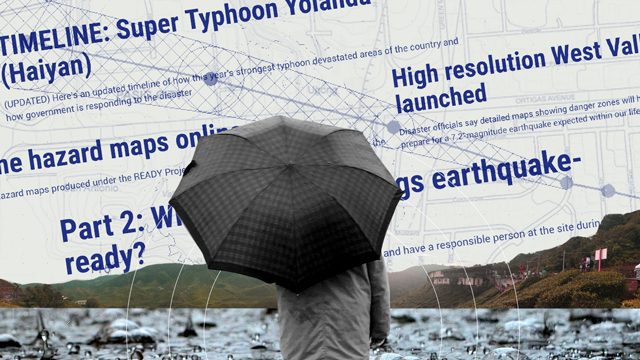SUMMARY
This is AI generated summarization, which may have errors. For context, always refer to the full article.

On November 8, 2013, the Philippines survived the strongest cyclone that ever hit the country.
With recorded maximum sustained winds of 235 kph and gustiness of up to 275 kph, Super Typhoon Yolanda (international name: Haiyan) washed out cities and killed thousands.
As Yolanda unleashed its fury that fateful weekend, storm surges as high as 7 meters flattened villages in the most unexpected way. Deaths could have been averted if the consequences of a storm surge were properly explained to the public, forecasters said.
It was a lesson that cost thousands of lives.
Back to basics
Understanding the scientific jargon behind these phenomena is a challenge, especially to journalists not trained in the sciences.
But we try. We spend hours of research, training, and practice to be able to translate the jargon into something easier to understand.
Attention to disseminating information about risks and hazards has been the priority of Rappler, not only for typhoons or earthquakes, but for other natural or man-made emergencies as well.
The harsh lessons of Yolanda pushed us to make information related to disaster-preparedness, response, and recovery more easily understood by the public.
We created a platform that overlays on a map relevant information such as hazards, evacuation centers, and police posts among others. This platform is called Agos which crowdsources online reports to connect those in need.
As a newbie journalist who covered the disaster beat, churning out knowledge pieces and running after local government officials for their disaster management plans were part of the day to day.
We try to combine the hard facts with creative storytelling to engage the reader.
Part of our coverage included discussing the impact of the “Big One” – a 7.2-magnitude earthquake – that could happen when the West Valley Fault Line moves. We published interactive quizzes for the public to easily test if their house can withstand major earthquakes.
We also saw the importance of reminding the public about events such as the sinking of M/V Princess of the Stars or the eruption of Mt Pinatubo to prevent a repeat.
Efficient governance
But all these boil down to governance.
Years have passed since Yolanda struck the country and still, many communities affected by the typhoon have yet to return to their normal lives.
There was a “mismatch” in resettlement requirements as estimated by the housing agencies. Four years later, the backlog in housing is still an issue.
The Yolanda rehabilitation experience is not an isolated case. The country experiences an average of 20 typhoons and a couple of earthquakes a year, but reconstruction lags behind.
Officials say that it could be attributed to a lack of budget or capacity to implement projects.
That’s why we continue to watch. We continue to write. When it comes to rehabilitation, we follow the money trail. We demand accountability.
In Rappler, we don’t cover disasters only as they happen. We go back to basics and ask ourselves, “Will the public understand what I’m writing?” “Will this piece avert deaths?”
We write about disasters because it can save lives.– Rappler.com
Add a comment
How does this make you feel?
There are no comments yet. Add your comment to start the conversation.